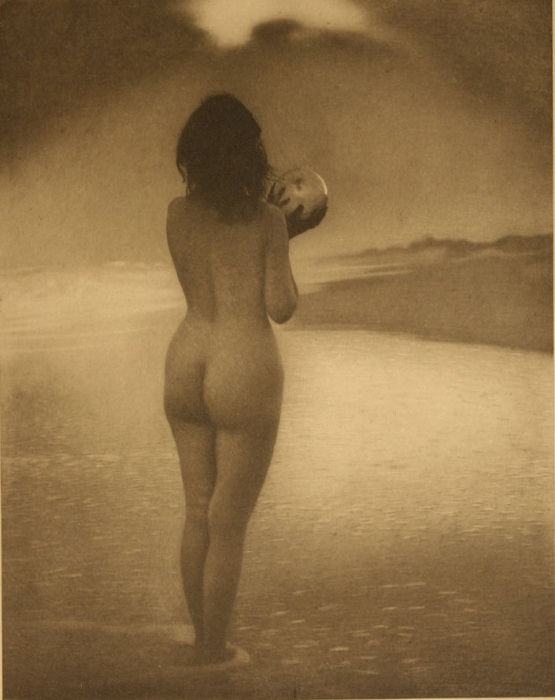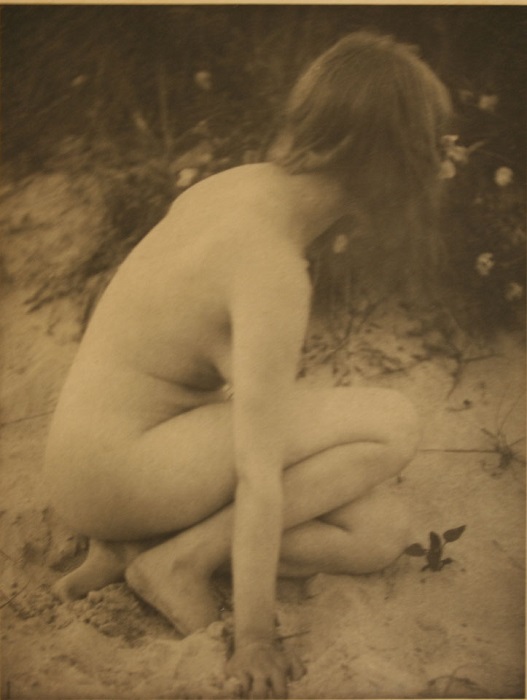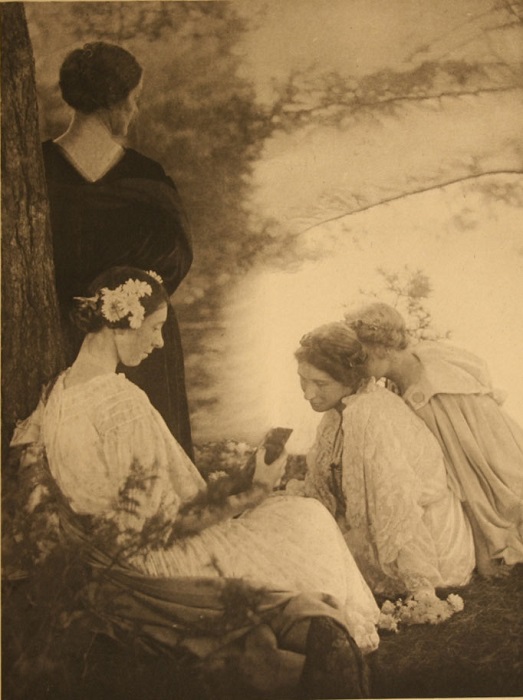All three of the photographs seen below were among the selection of works by Alice Boughton included in the April 1909 edition of Camera Work.
Boughton is famous for her unabashedly sensual depictions of female nudes. The two examples seen below, Dawn and Sand and Wild Roses, show her tendency to apply allegorical or metaphorical titles to such images. Each photograph places a female figure in a natural setting made semi-abstract by the choice of landscape, the cropping, and the diffuseness of the depicted details. Both women turn their heads away from the camera, allowing the viewer to observe their bodies without direct psychological interaction.
In the late nineteenth century Boughton was a student at the Pratt Institute, where she became acquainted with other students such as Gertrude Käsebier. Their painting instructor at Pratt, Ida C. Haskell, became Boughton’s longtime companion. By 1890 Boughton opened her own photography studio in New York. She maintained an association with Käsebier – at one point working as a studio assistant for Käsebier. And, Alfred Stieglitz included both of photographers in the Photo-Secession from the beginning. He included two of Boughton’s photographs in the inaugural exhibition of the collective in 1902.
Boughton carefully posed and arranged the four women in The Seasons to create compositional framing and visually pleasing groupings. The subjects are dressed in costumes and have attributes that suggest each figure is meant to depict one of the four seasons, as the title helps to indicate. Their robes and the natural setting give the scene a timeless feeling. Boughton’s decision to depict the female models in such an overtly allegorical way aligns this photograph with longstanding traditions involving personifications of the seasons in painting and other fine arts.




